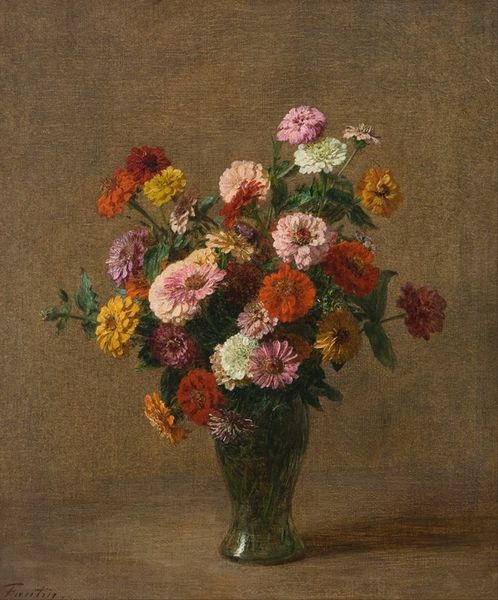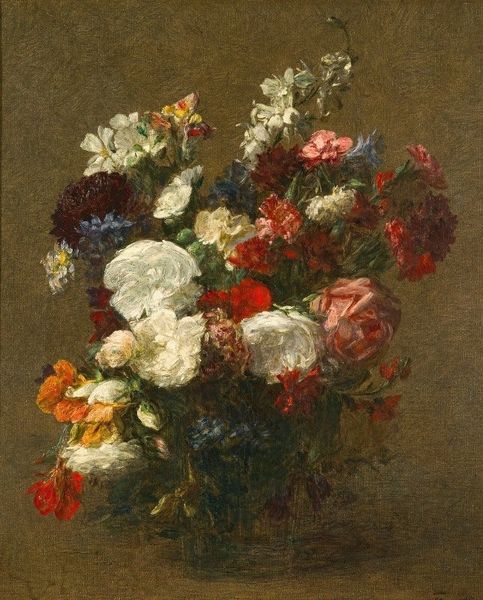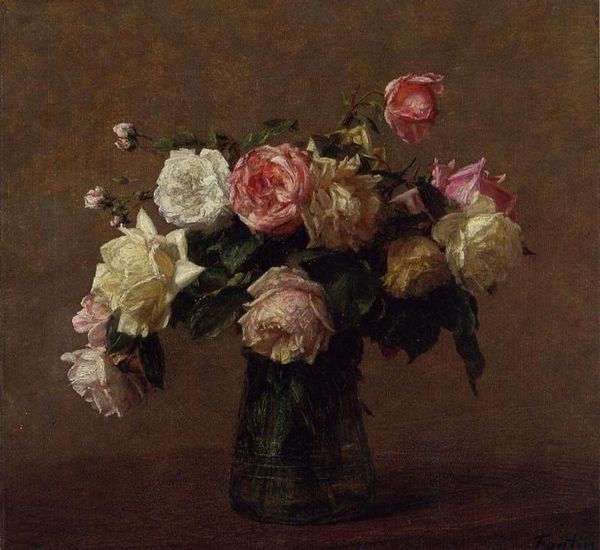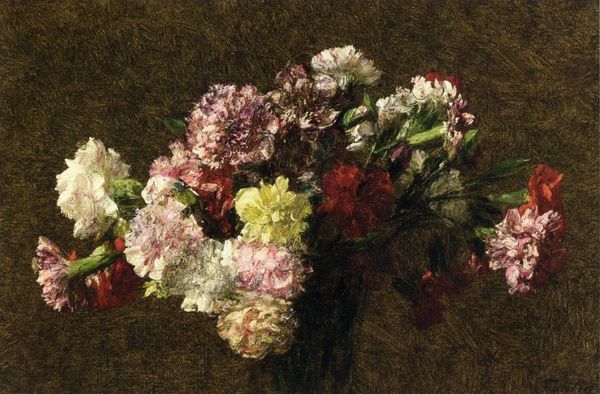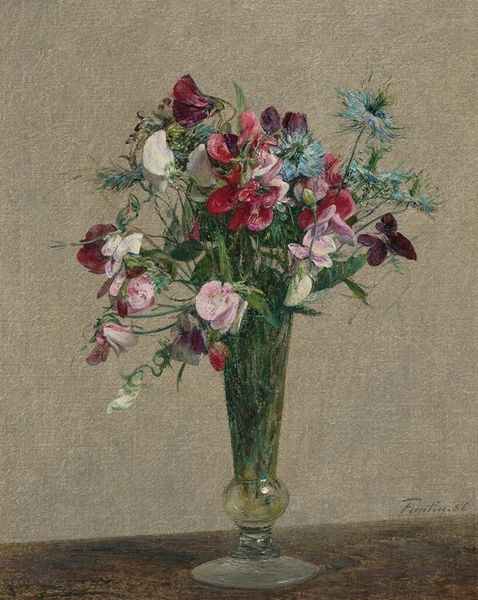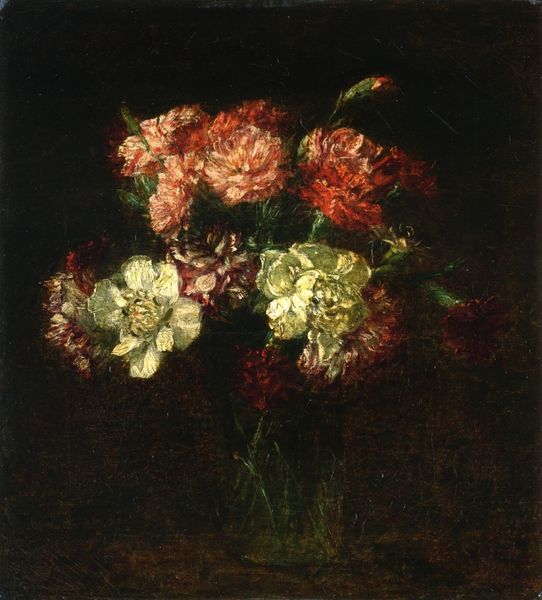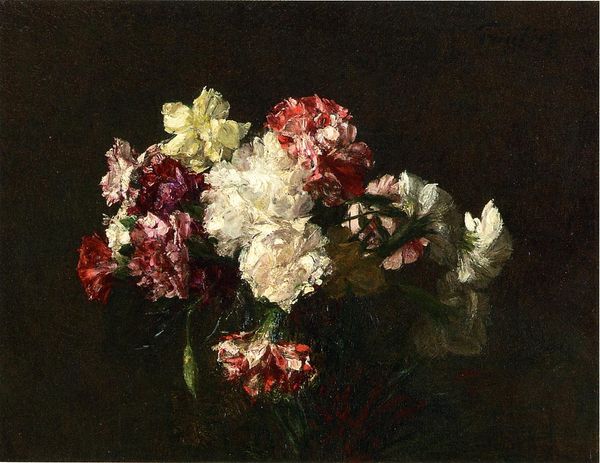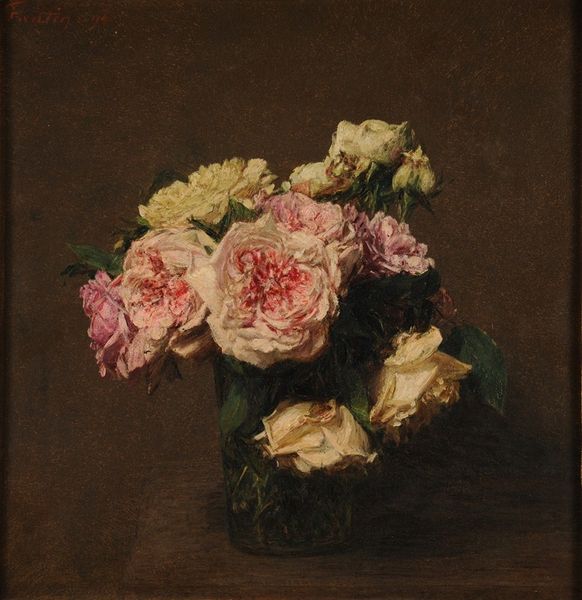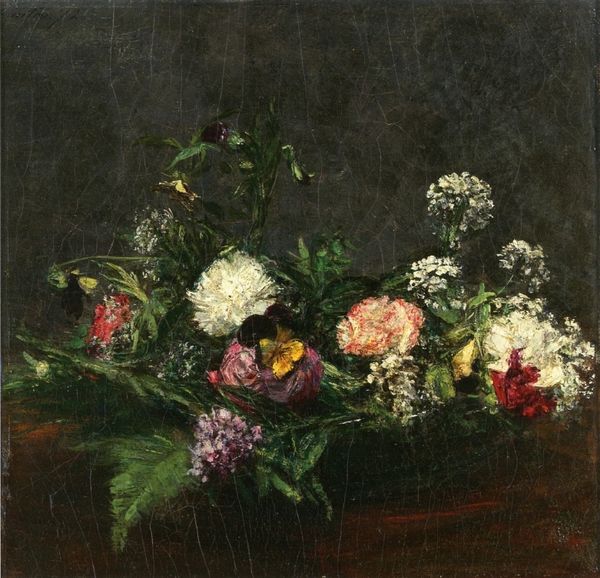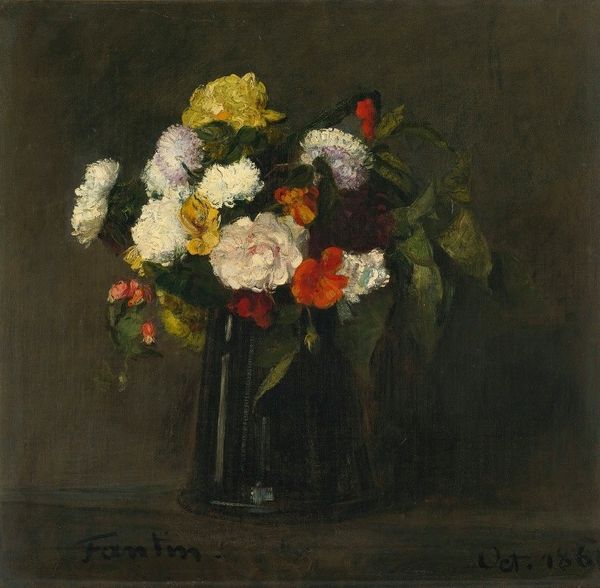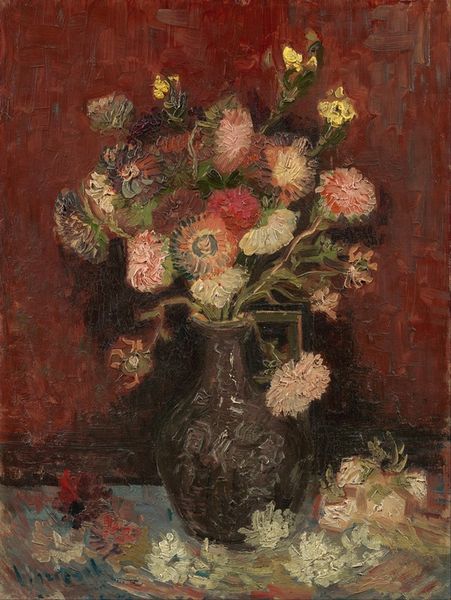
painting, plein-air, oil-paint
#
painting
#
impressionism
#
plein-air
#
oil-paint
#
oil painting
Copyright: Public Domain: Artvee
Editor: This is "Œillets," painted by Henri Fantin-Latour in 1887, done with oil paint, of course. The flowers appear a bit crowded and maybe even melancholic against the somber backdrop. How do you interpret this work? Curator: It's fascinating how the eye is immediately drawn to the carnations, isn't it? They become little vessels, each holding its own shade of feeling. Carnations themselves have layered meanings—love, fascination, even warning. Notice how they’re gathered, a multitude in unity. It whispers of shared experiences, of memories collected. Do you get a sense of temporal layering from it? Editor: Temporal layering? I see the individual blooms, yes, but I'm not sure about the time element. Curator: Think of each flower as a moment, a memory. Grouped together like this, don’t they suggest a convergence? Fantin-Latour might be hinting at the accumulation of time, how past joys and sorrows commingle, enriching the present, deepening the shadows even? Editor: So, the flowers aren’t just pretty, but a symbol for collected memories? Curator: Precisely! The somber background emphasizes the transient nature of beauty and perhaps, by extension, of life itself. It invites us to consider how we carry our own bouquets of memories. What does this artwork trigger in you now, seeing it this way? Editor: Well, now it does feel heavier, like the painting carries not just a beautiful bouquet but the weight of time and experience too. Thanks for helping me look at the symbols behind it. Curator: My pleasure. Exploring how the image holds and conveys cultural memory is a rewarding journey. It adds profound depths.
Comments
No comments
Be the first to comment and join the conversation on the ultimate creative platform.
